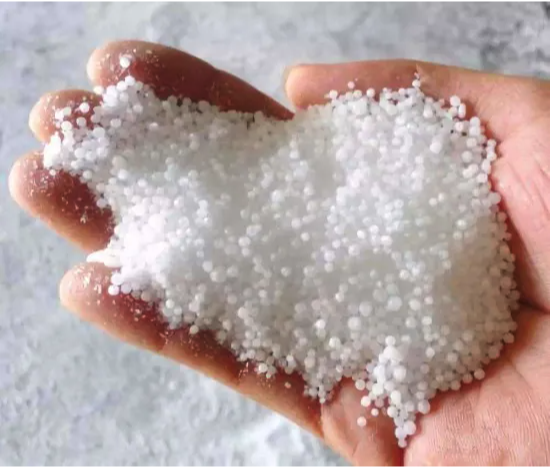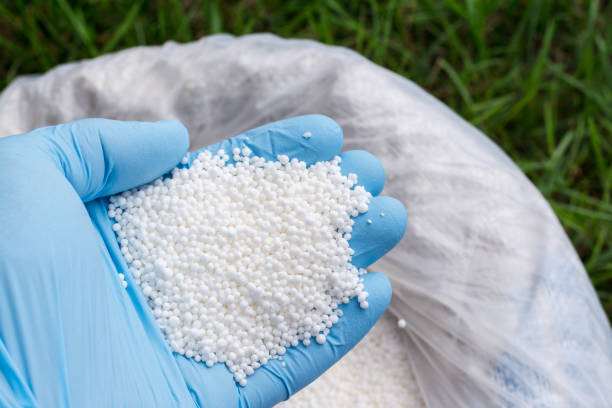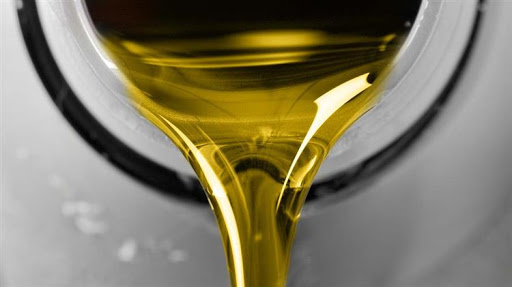Bulk Urea (N46 Feriliser Grade)
Urea, also known as carbamide, is an organic compound with chemical formula CO(NH2)2. The primary raw material used to manufacture urea is natural gas, which ties the costs directly to gas prices. We source our Urea from the refineries in Middle East region to assure the best quality and lowest price for our world-wide clients. We ship our Urea product in bulk through sea freight.
More than 90% of world industrial production of urea is destined for use as a nitrogen-release fertilizer. Urea has the highest nitrogen content of all solid nitrogenous fertilizers in common use. Therefore, it has the lowest transportation costs per unit of nitrogen nutrient. Thus urea fertilizers rapidly transform to the ammonium form in soils. Urea is also used in many multi-component solid fertilizer formulations. Urea is highly soluble in water and is therefore also very suitable for use in fertilizer solutions (in combination with ammonium nitrate: UAN), e.g., in 'foliar feed' fertilizers. Click below to learn to download product specification of our bulk Urea.

Ammonium nitrate
A concentrated granular nitrogen fertilizer to provide agricultural plants with nitrogen in the early spring, as well as after cut and grazing to promote after growing, active growth and development of green material. It contains equal amounts of ammonia and nitrate nitrogen, and is a universal and high-performance mineral fertilizer. The prolonged use gives an acidifying effect on the soil, thus requiring periodic calcification.
- Best source of quick-release nitrogen
- Balanced nitrogen nutrition provided by nitrate and ammonium forms of nitrogen
- Effective for a wide range of crops
- Increases the protein and oil content in farmed products
- Period: autumn, spring
- Method: broadcasting
- Soils: alkaline soils (рН (Н2О) > 7)

Bitumen
Bitumen is defined in the Oxford English Reference Dictionary as ‘a tarlike mixture of hydrocarbons derived from petroleum naturally or by distillation, and used for road surfacing and roofing.’ However, as will be seen, its use it not restricted to these applications.
It is widely belived that the terms ‘Bitumen’ originated in the ancient and scared language of Hindus in India, Sanskrit, in which ‘jatu’ means pitch ‘jatu-krit’ means pitch creating. These terms referred to the pitch produced by some resinous trees. The Latin equivalent is claimed by some to be originally ‘gwitu-men’ (pertaining to pitch) and by other to be ‘pixtu-men’ (bubbling pitch) which was subsequently shortened to ‘bitumen’ then passing via French into English.
There are several reference to bitumen in the Bible, although the terminology used is confusing. In Genesis, Noah’s ark is ‘Pitched within and without with pitch’, and Moses’ juvenile adventure is in ‘an ark of bulrushes, daubed with slime and with pitch’. Even more perplexing are the descriptions of the building of the Tower of Babel. The Authorized Version of the Bible says ‘they had brick for stone, and slime had they for mortar’; the new International Version states that ‘they used bricks instead of stone and tar instead of mortar’; Moffat’s 1935 translation says ‘they had bricks for stone and asphalt for mortar’; but the New English Bible states that ‘they used bricks for stone and bitumen for mortar’. Even today, the meaning of the world Bitumen, tar, asphalt and pitch vary between users.
Refined Bitumen is manufactured from crude oil. It is generally agreed that crude oil originates from the remains of marine organisms and vegetable matter deposited with mud and fragments of rock on the ocean bed. Over millions of years, organic material and mud accumulate into layers some hundreds of metres thick, the substantial weight of the upper layers compressing the lower layers into sedimentary rock. Conversion of the organism and vegetable matter into hydrocarbons of crude oil is thought to be the result of the application of heat from within the Earth’s crust and pressure applied by the upper layers of sediments, possibly aided by the effected of bacterial action and radioactive bombardment. As further layers were deposited on the sedimentary rock where the oil had formed, the additional pressure squeezed the oil sideways and upwards through porous rock. Where the porous rock extended to the Earth’s surface oil seeped through to the surface. Fortunately, the majority of the oil and gas was trapped in porous rock which was overlaid by impermeable rock, thus forming gas and oil reservoirs. The oil remained here until its presence was detected by seismic surveys and recovered by drilling through the impermeable rock.
The four main oil producing areas in the world are the United State, Middle East, Russia and countries around the Caribbean. Crude oils differ in their physical and chemical properties. Physically, they vary from viscous black liquid to free flowering straw-colored liquids.
Chemically, they may be predominantly paraffinic, naphthenic or aromatic with combinations of the first two being most common. There are nearly 1500 different crudes produced throughout the world. Based on the yield and the quality of the resultant product, only a few of these are considered suitable for the manufacture of Bitumen.

Lubricant and Engine oil
Motor oil or engine oil is an oil used for lubrication of various internal combustion engines. The main function is to reduce wear on moving parts; it also cleans, inhibits corrosion, improves sealing, and cools the engine by carrying heat away from moving parts.
Motor oils are derived from petroleum-based and non-petroleum-synthesized chemical compounds. Motor oils today are mainly blended by using base oils composed of hydrocarbons, polyalphaolefins (PAO), and polyinternal olefins (PIO), thus organic compounds consisting entirely of carbon and hydrogen. The base oils of some high-performance motor oils however contain up to 20% by weight of esters.
Aiwu Trading LLC is in position to supply the well known brand to prepare the cargo of Based oil, Engine oil and other Motor lubricant products
